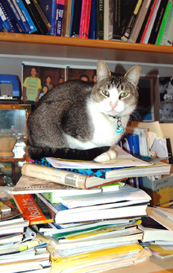Susan Ingham’s Research
After a career teaching the history and theory of art to art students and undertaking further qualifications to remain in contact with developments in contemporary art, I began research for a PhD.
In 1996/7 I had been given the opportunity to visit two ground-breaking exhibitions of Asian art in quick succession which radically altered my perceptions and caused me to consider a new direction for future research. The first was the Asia-Pacific Triennial mounted by the Queensland Art Gallery in Brisbane and the second was the Asia Society of New York’s travelling exhibition, Contemporary Art in Asia, Traditions and Tensions, which I encountered in Vancouver. This was global art that emerged from local issues and, with its commitment to content and meaning, it stood in opposition to the now decaying traditions of Euro-American Modernism. Where Australia was concerned, culture was Eurocentric, as was common in the late twentieth century, with the focus on art practice and intellectual developments in Europe and America; but politically and economically Australia was increasingly aware of the importance of Asia.

I commenced research in 1999 and in the following years I spent a month each year in Java, mainly in Jakarta, Bandung and Yogyakarta, the main centres of Indonesian modern and contemporary art. I enjoyed every minute of my research and developed a great respect for those working in the visual arts in Indonesia as they are doing so with very little public or commercial support.
In Australia academically I had crossed disciplines between the visual arts and Indonesian Studies. Although this is encouraged, it had attendant problems, some of which have remained unresolved. The visual arts tend to take a global perspective, generalising about Asian art and overlooking local knowledge and variations. On the other hand Indonesianists prioritise local knowledge and treat the arts as anthropological objects, often being unaware of the international debates that have transformed attitudes in contemporary art. A range of theories were mixed into research in both fields stemming from anthropology, sociology, history, politics and economics, and sometimes the work of art was being lost.
As a result I resolved to have more works of art and specific analysis in the thesis.
Susan Ingham’s Qualifications
- PhD: 2008, University of New South Wales, College of Fine Arts
Thesis: Powerlines: Alternative art and infrastructure in Indonesia in the 1990s - M.A. Prelim: 1990, University of Sydney, Power Institute, Foundation for Art and Visual Culture
Thesis: Art Commissions in New Parliament House - B.A. (Visual Arts): 1987, City Art Institute (now the University of New South Wales College of Fine Arts)
Majors: painting, printmaking - Diploma of Education: 1965, University of Melbourne
- B.A.: 1964, University of Melbourne